Located in the Sambor Prei Kuk group of temples, Prasat Chrei (also known as N18/M17) is popular with photographers for its stunning encasement by the roots of a tree. The temple is actually part of Prasat Sambor, a fact that is difficult to recognise today as the current access road divides the site and only traces remain of Prasat Sambor’s third and outermost enclosure.
The shrine itself is rectangular and underneath those tree roots, decoration of the outer walls can still be seen, in a similar style to other shrines in the area. The sandstone doorframe features an inscription on one side and on the inner wall you can see pitching hooks that could be assumed to have once supported a wooden ceiling. It also featured a water spout that exited out the north wall.
The temple is believed to have possibly housed a linga that was dedicated to Ratnesvara.
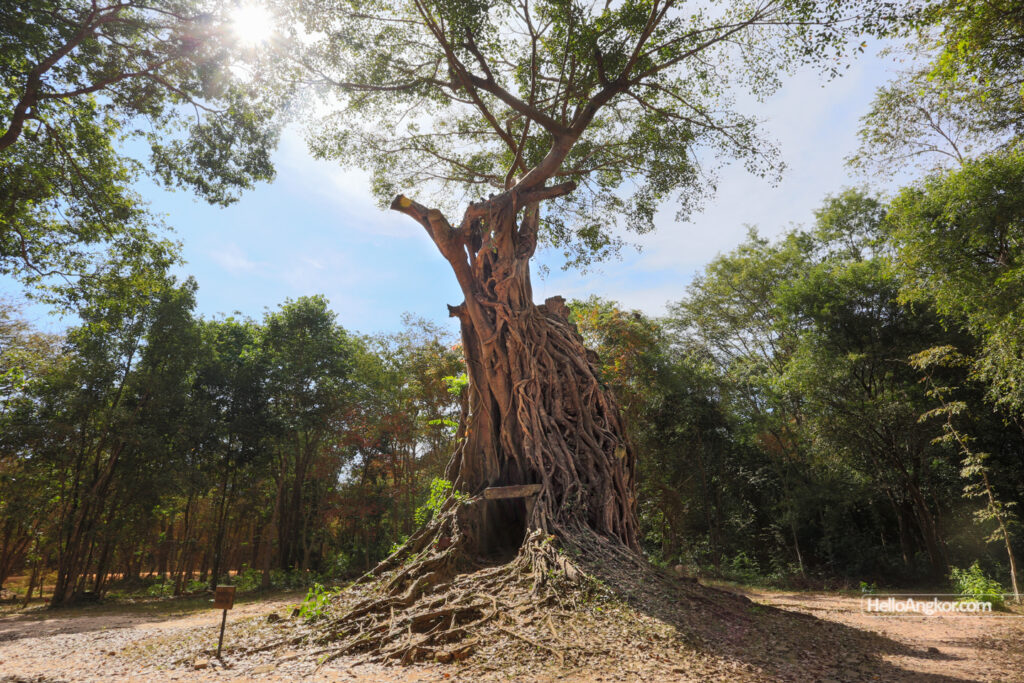
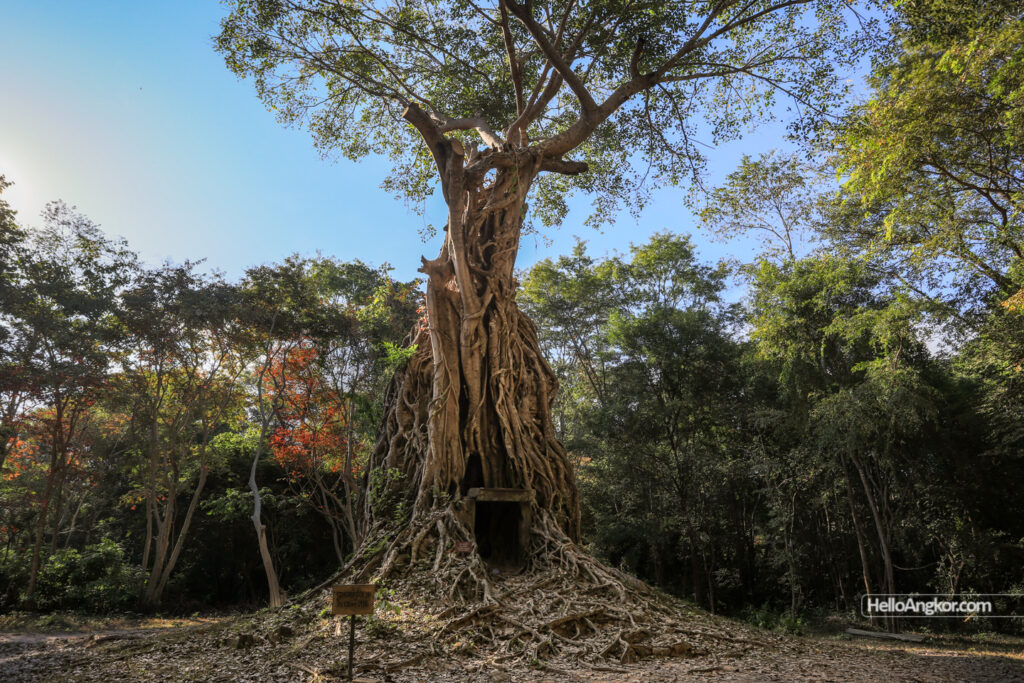
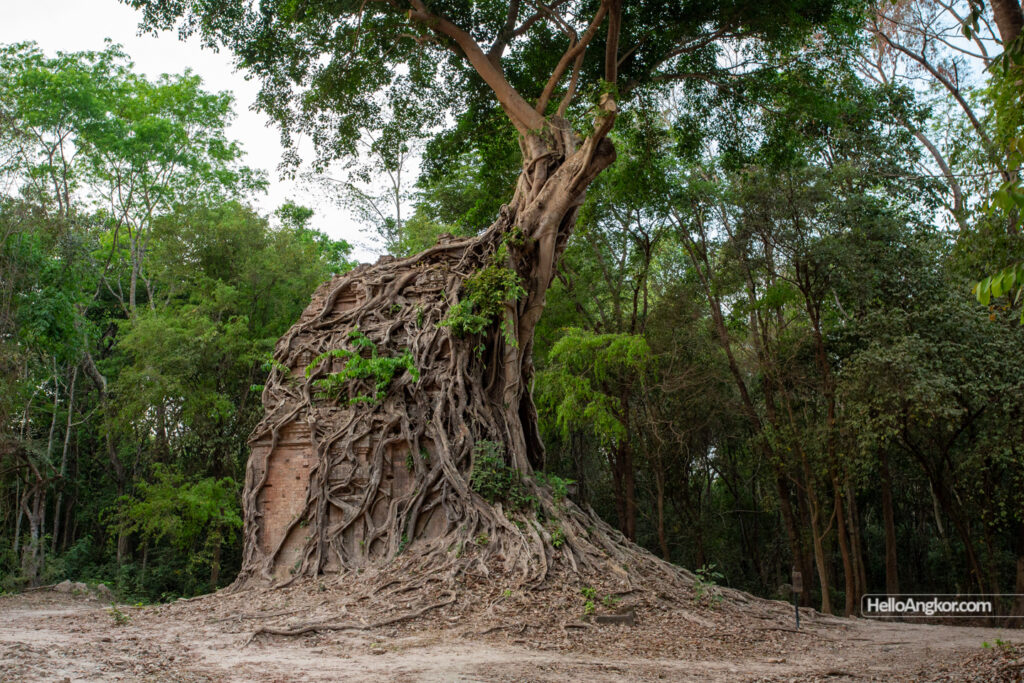
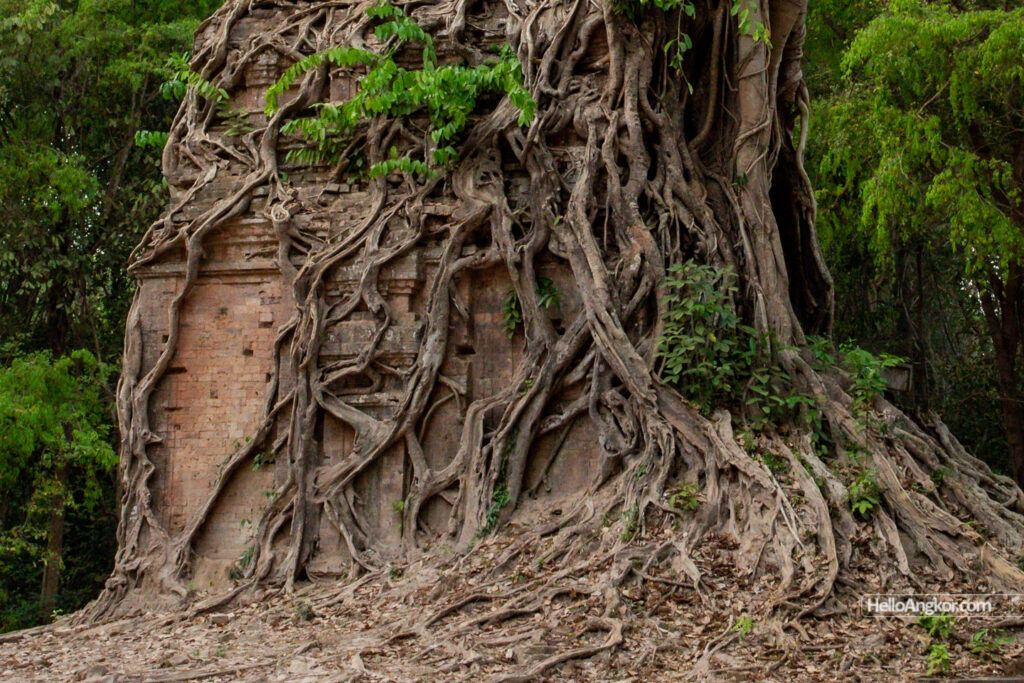
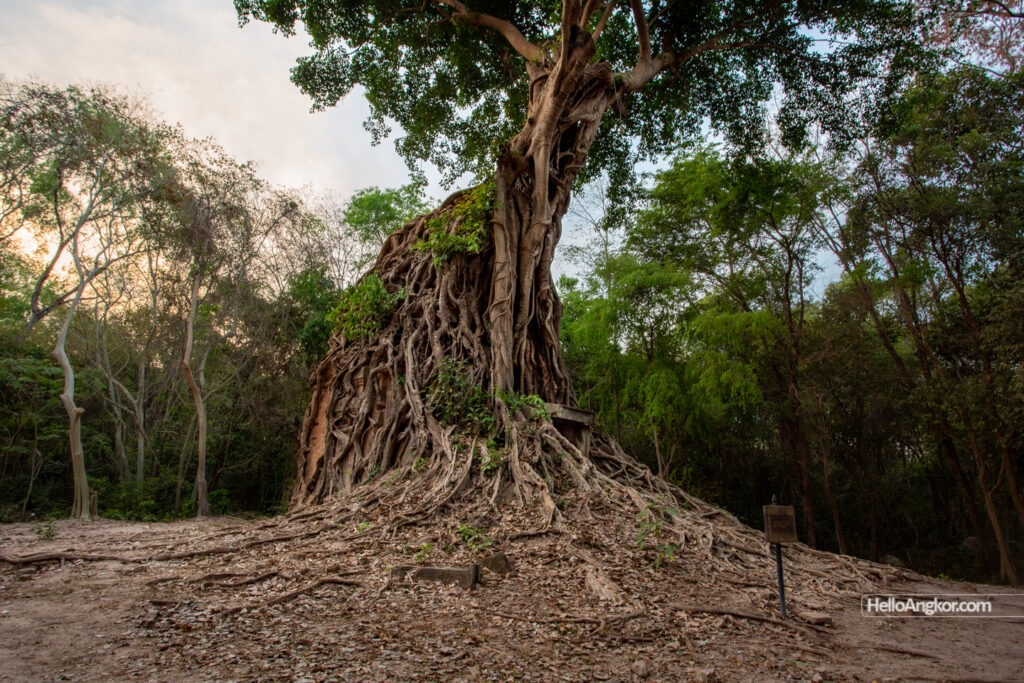
Historical Notes
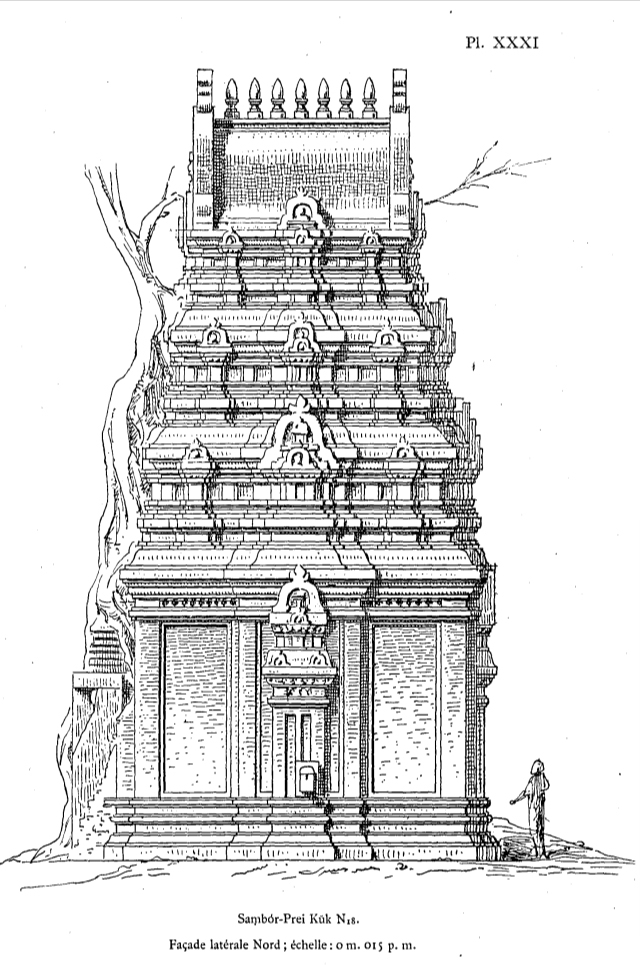

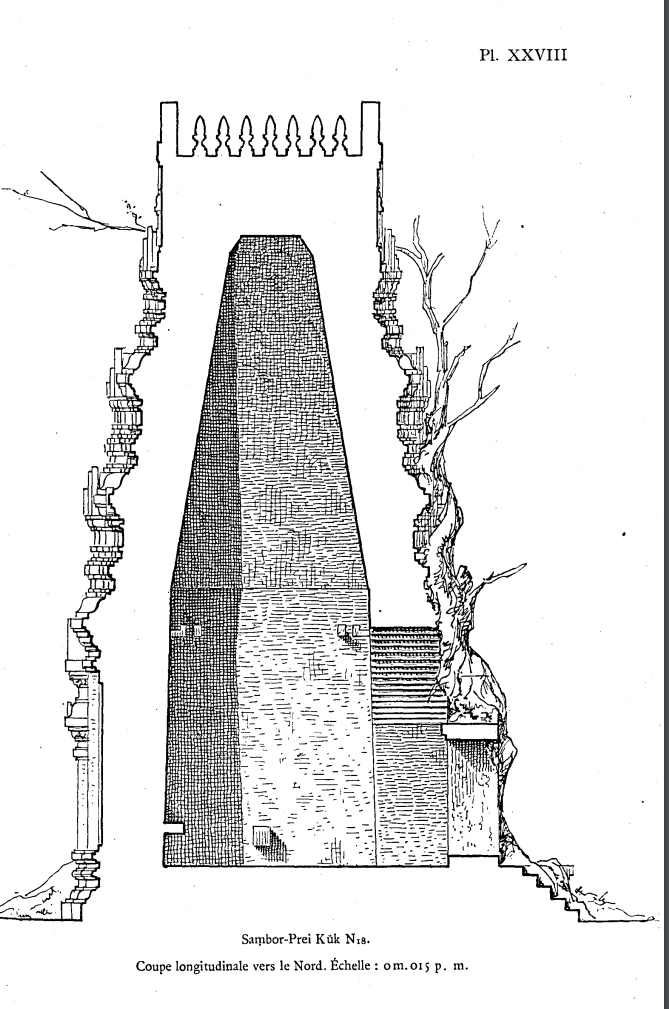
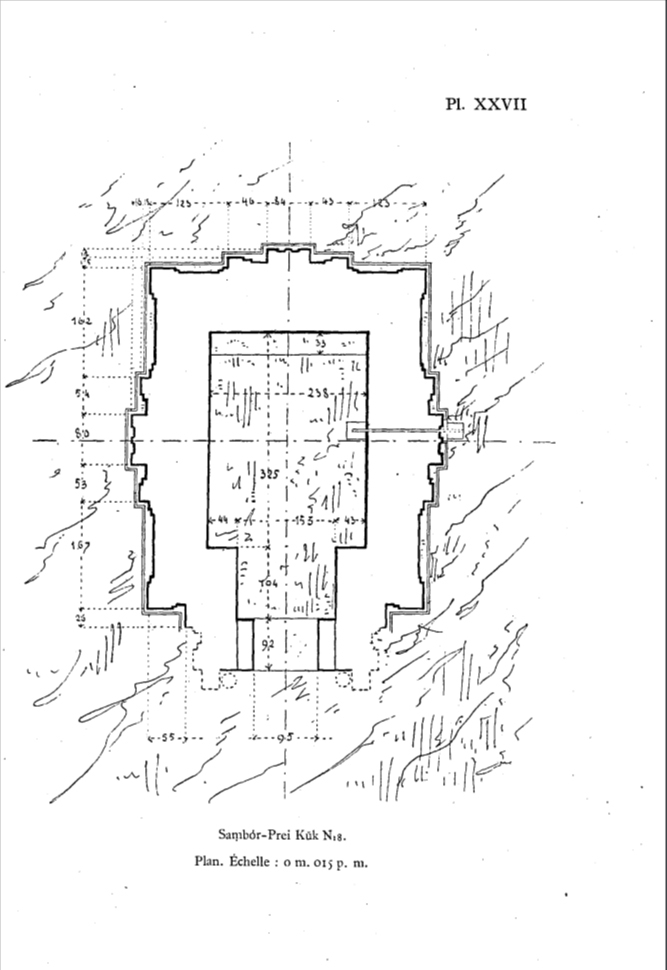
Translated from French
This small temple is very well preserved and its door shows one of the most beautiful inscriptions of the group. It is in Khmer and makes it possible to relate the building to a foundation of Içänavarman I. It is clearly rectangular in plan and equipped with false doors. The vault is made of the inflection of the walls. The room has a somasutra whose inner bowl is not visible, but whose outer spout is covered. Almost at the same level is a stone bench that occupies the entire back of the sanctuary. The hallway has no interior pilasters; it is capped by a large slab supported by the curvature of the walls.
The exterior decor shows the ordinary elements, with the exception of building reductions which are absent here. It is true that they would have almost duplicated the false door which one can hardly consider otherwise. A recess, which is repeated on each floor, constitutes the background of these false doors and false bays. Each false door is made up of a single body with two floors; the lower has an indication of the leaves above the basement and the base, common to the building. The lower floor has a cornice with balusters and birds. Its vertical ogee terrace is adorned with two niches that enclose a radiating motif. The floor, with a cornice of oblique leaves, simply offers in its middle a double plan preceded by a niche whose arc frames the same motif. The body itself is terminated by a pediment which seems to have been decorated with a reduction of an edifice.
The floors of the tower are three in number; preserved under the roots of a banyan tree, they show the rectangular plan terminated at the top by a vault between two gables; the departure of the arc by misfortune is not recognizable. Each of these floors has the following composition on the large sides: base, body with small pilasters, simple base and cornice decorated with birds, ter rasson with an almost vertical cove. In the centre, the recess is preceded by a motif in three planes, a simple repetition of the level of the false door; on the rear plane, an arch encloses a small building carried by the intermediate plane, while the front plane ends in the ordinary arch-niche. These three plans have a common cornice a little lower than that of the floor.
The side panels are occupied by a two-plane wall, with a lower cornice, and finished with an arch that encloses a human face. The narrow faces receive the same decoration but reduced.
Behind and extending to the north is a considerable srah (basin).
L’Art Khmer Primitif , Henri Parmentier, 1927
Inscription
- K. 149 – doorjamb – 30 lines of Khmer – IC IV, p. 28
Reported for the first time by G. MORAND in 1907, the inscription of the south side wall of the N18 tower was briefly mentioned by L. FINOT in 1912.
It is a Khmer inscription of 30 lines in good condition, except for some chipping in the middle and towards the end, which gives a list of workers, approximately 40 vă and 115 ku with children, offered to the god Ratneçvara by an Acarya bearing the title of Mratañ which he had obtained (dar) from the kings Bhavavarman I, Mahendravarman and Içanavarman I. The list ends with the mention of about thirty workers, coming from a ritual donation (satra) to Knar Vahv, 280 oxen and a certain number of buffaloes. The text begins with the indication of the nakṣatra and the horoscope (lagna) of a date whose year is not specified, but which must have belonged to the reign of Içanavarman I, the last king mentioned.
We can deduce from this inscription that the deity placed in tower N18, probably a linga, bore the name of Ratneçvara.
Inscriptions Du Cambodge, George Coedes
Map
Site Info
- Site Name: Chrei (Pr.) Khmer Name: បា្រសាទជ្រៃ
- Reference ID: HA13548 | Posted: January 19, 2021 | Last Update: June 2nd, 2023
- Other Names: N18,M17, Prasat Chrey, Prasat Daeum Chrei, ប្រាសាទ ដើមជ្រៃ
- Tags/Group: pr, ra, Sambor Prei Kuk, Temples
- Location: Kampong Thom Province > Prasat Sambour District > Sambour Commune > Sambour Village
- MoCFA ID: 3502
- Inscription Number/s: K. 149

